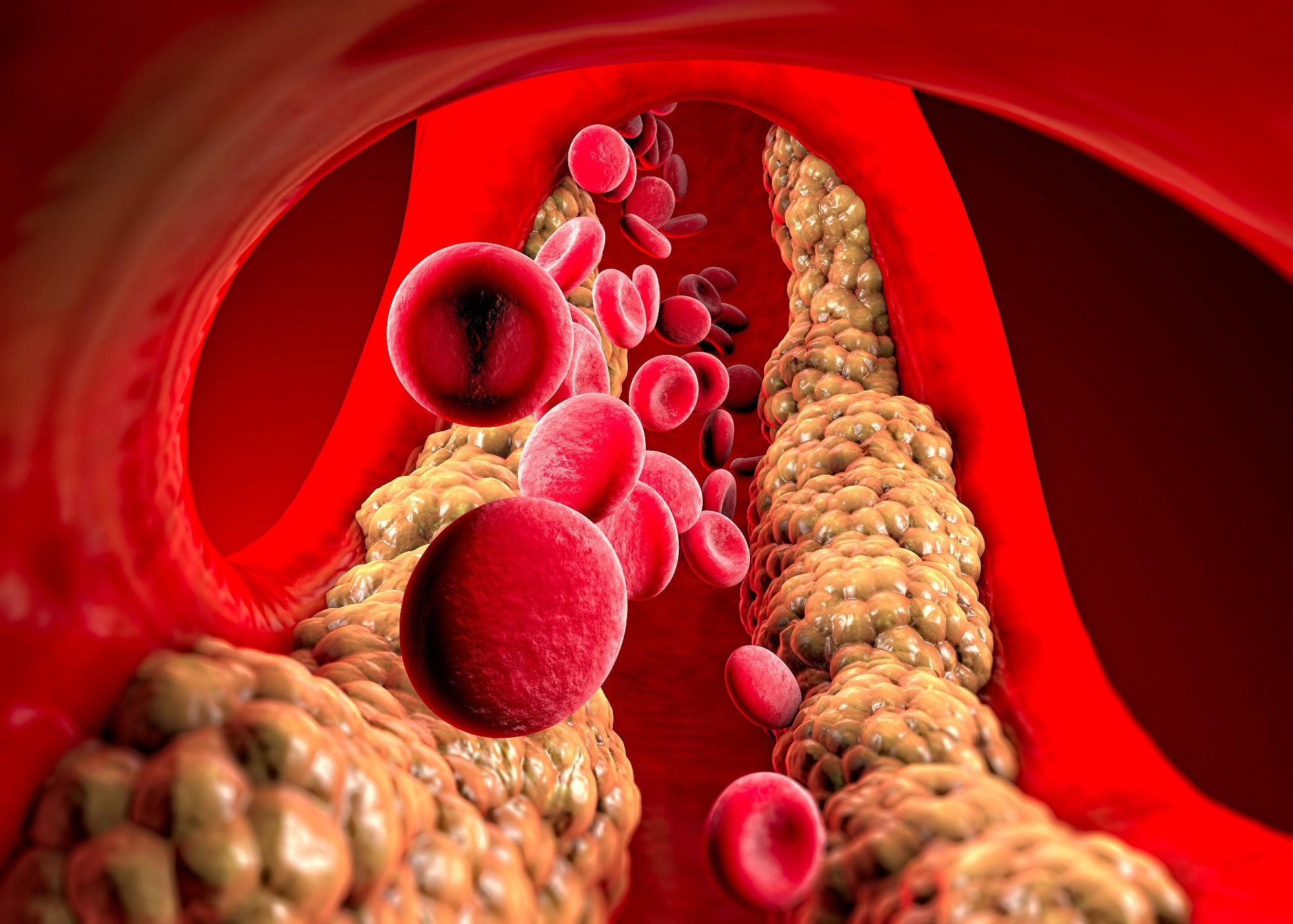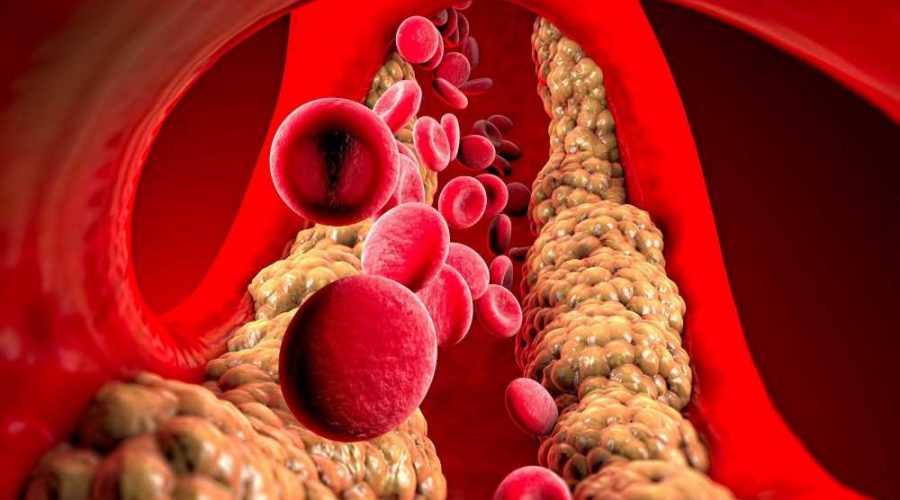Impact of age-related alterations in lipid metabolism on general health
In a recent study published in Nutrients, scientists provide a detailed overview on age-related alterations in lipid metabolism and its association with age-related chronic diseases.
 Study: The Roles of Lipid Metabolism in the Pathogenesis of Chronic Diseases in the Elderly. Image Credit: Naeblys / Shutterstock.com
Study: The Roles of Lipid Metabolism in the Pathogenesis of Chronic Diseases in the Elderly. Image Credit: Naeblys / Shutterstock.com
What is lipid metabolism?
Lipid metabolism plays a vital role in regulating various physiological processes including hormone synthesis, energy production, and fat storage.
Alterations in lipid digestion, absorption, anabolism, and catabolism is commonly observed among elderly people. These changes are associated with reduced nutrient intake, excessive fat accumulation, and progressive decline in physiological functions of various organs.
In the elderly, hyperlipidemia and visceral fat accumulation increase the risk of many chronic diseases including cardiovascular disease, type 2 diabetes, obesity, and nonalcoholic fatty liver disease.
Changes in lipid digestion with age
Dietary lipids are digested in the gastrointestinal (GI) tract by enzymes secreted by the pancreas, which is followed by lipid absorption into the bloodstream through the intestinal wall.
With increasing age, degeneration in the GI tract function occurs in the form of organ atrophy, reduced pancreatic secretion, reduced enzyme production, and decreased bile acid concentrations. These changes are responsible for age-related alteration in lipid digestion.
Current evidence indicates that the aging process is associated with reduced lipid absorption and increased cholesterol absorption.
Among lipid digestive enzymes, gastric lipase is primarily responsible for lipid breakdown in the GI tract; however, the activity of this enzyme negatively correlates with age. Lipase remains stable in acidic pH; however, age-related gastric atrophy and the chronic use of acid suppressive medicines collectively reduce gastric acid secretions, which may contribute to reduced activity of gastric lipase in elderly people.
Alterations in pancreatic morphology and function also occurs with increasing age. The main age-related change is reduced activity of pancreatic lipase, an enzyme responsible for the digestion of most dietary triglycerides. Accumulation of unfolded enzymes in the pancreas is associated with reduced pancreatic lipase activity.
Bile acid acts as an emulsifier to facilitate lipid digestion and absorption. Previous studies indicate that the aging process is associated with reduced bile acid reabsorption in the ileum, which subsequently leads to an induction in cholic acid load in the colon.
Changes in lipid absorption with age
Digested lipids are absorbed in the lower part of the duodenum and upper part of the jejunum. Reduced lipid absorption capacity has been observed with increasing age, which might be due to morphological changes in the small intestine.
The exact changes in lipid absorption in elder people remain largely unknown. Previous research suggests reduced triglyceride absorption and an induction in cholesterol absorption with age.
Changes in lipid anabolism and catabolism with age
Lipid anabolism and catabolism are associated with hepatic biosynthesis and degradation of fatty acids, triglycerides, cholesterol, and other lipid substances. Lipids bind to proteins to form lipoproteins, which are stored in adipose cells for energy production and other biological processes.
Human and animal studies have demonstrated an induction in blood levels of free fatty acids, triglycerides, and low-density lipoprotein-cholesterol (LDL-C), as well as reduced high-density lipoprotein-cholesterol (HDL-C) levels with age.
Although the absorption of triglycerides reduces with age, an induction in fatty acid uptake and triglyceride synthesis in the liver has been observed in elderly people. These changes are associated with several chronic diseases, including cardiovascular disease and atherosclerosis.
In contrast to increased lipid synthesis, reduced lipid degradation has been observed with age. Impaired mitochondrial fatty acid beta-oxidation is primarily responsible for reduced fatty acid degradation, which disrupts energy balance and lipid homeostasis in the body.
Dysfunction of peroxisome proliferator-activated receptor α (PPARα), which is the main regulator of beta-oxidation, can significantly contribute to age-related diseases including fatty liver disease, renal fibrosis, and cardiac disorders.
Like triglycerides, cholesterol biosynthesis in the liver increases with age, which also leads to a greater risk of fatty liver disease and atherosclerotic cardiovascular disease. This could be due to reactive oxygen species (ROS)-mediated induction in the expression of cholesterol synthesis-related genes.
Previous studies have shown that the reduced hepatic expression of LDL receptors is responsible for reduced clearance of LDL-C from the circulation. Moreover, age-related reductions in bile acid synthesis reduces the utilization of cholesterol. These changes are collectively associated with excessive accumulation of cholesterol in the body.
Endogenous changes in lipid metabolism, including increased production and accumulation of lipids, as well as reduced utilization and clearance of lipids, are associated with various chronic age-related health conditions, including cardiovascular disease, type 2 diabetes, nonalcoholic fatty liver disease, and obesity.
- Song, R., Hu, M., Qin, X., et al. (2023). The Roles of Lipid Metabolism in the Pathogenesis of Chronic Diseases in the Elderly. Nutrients. doi:10.3390/nu15153433. www.mdpi.com/2072-6643/15/15/3433
Posted in: Medical Science News | Medical Research News | Medical Condition News
Tags: Adipose, Aging, Atherosclerosis, Bile, Blood, Cardiovascular Disease, Cholesterol, Chronic, Diabetes, Digestion, Enzyme, Fatty Acids, Fatty Liver, Fibrosis, Genes, Hormone, Hyperlipidemia, Lipase, Lipids, Lipoprotein, Liver, Liver Disease, Metabolism, Morphology, Nutrients, Obesity, Oxygen, Pancreas, pH, Receptor, Research, Small Intestine, Triglyceride, Type 2 Diabetes

Written by
Dr. Sanchari Sinha Dutta
Dr. Sanchari Sinha Dutta is a science communicator who believes in spreading the power of science in every corner of the world. She has a Bachelor of Science (B.Sc.) degree and a Master's of Science (M.Sc.) in biology and human physiology. Following her Master's degree, Sanchari went on to study a Ph.D. in human physiology. She has authored more than 10 original research articles, all of which have been published in world renowned international journals.
